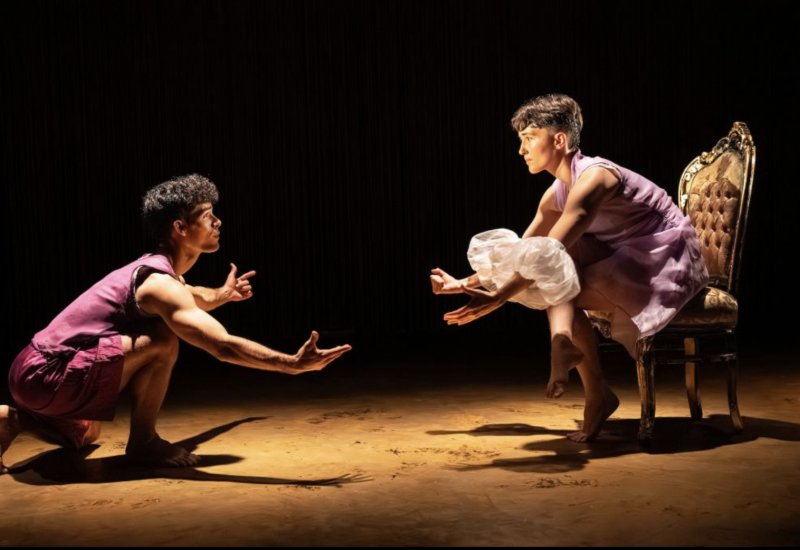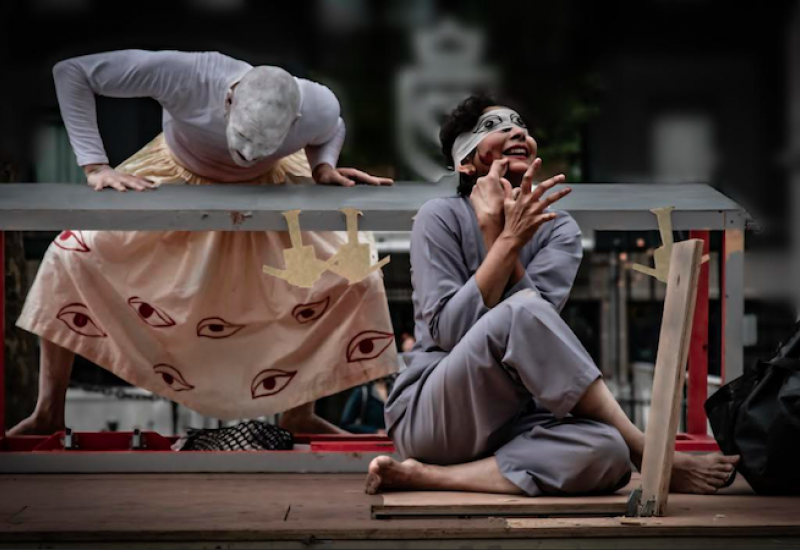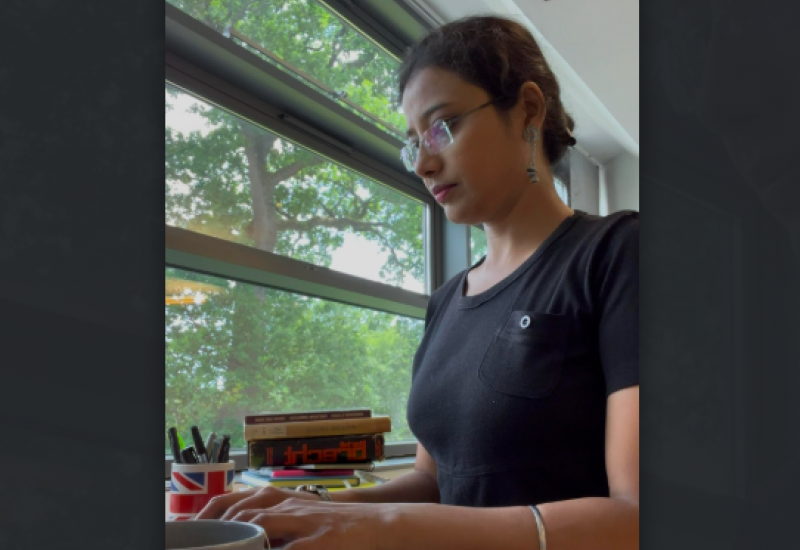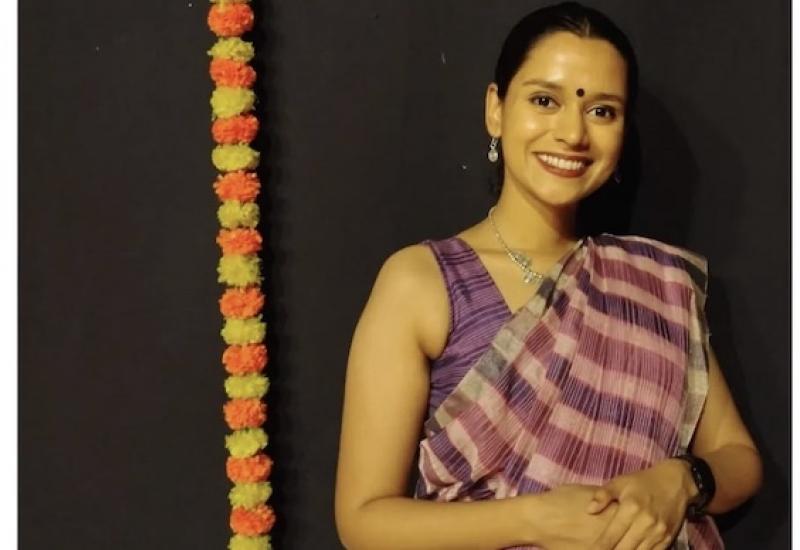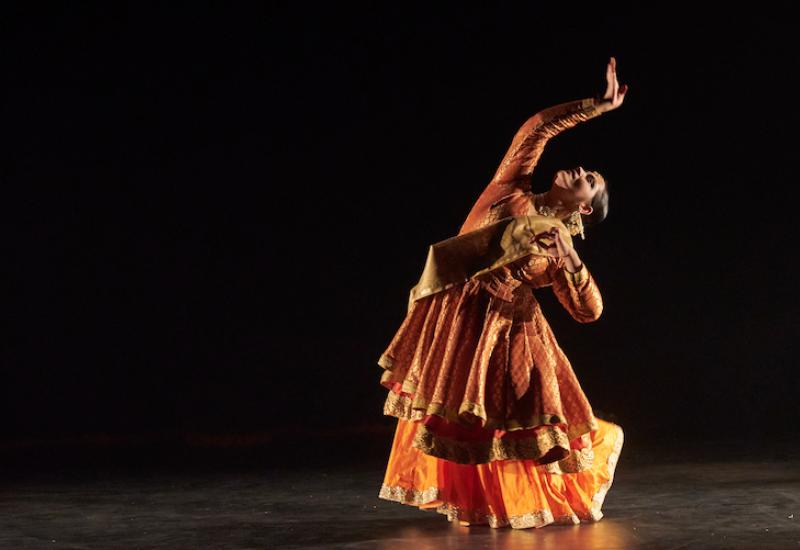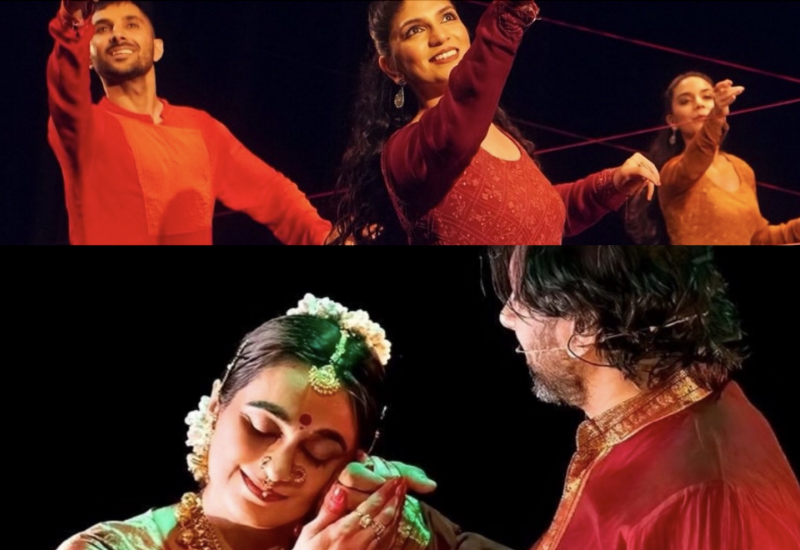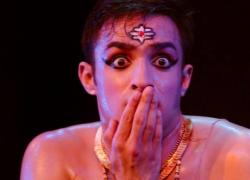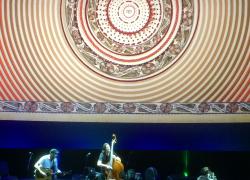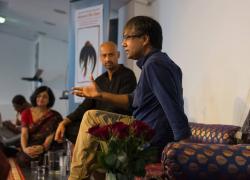A response to Divya Kasturi's 'To Varnam with Love'
To Varnam With Love (30 September, 2021, The Place, London) was an evening of multimedia dance performance, exploring projection, props, lighting, music, spoken word, singing and a variety of different movement styles. I first experienced this work back in 2017 at an end-of-residency sharing at The Place when it was presented more informally as a collection of ideas. However, watching its fully fledged iteration on stage, I left the theatre feeling both disappointed and frustrated.
Divya presented a personal and intimate exploration of the Mohamaana Varnam, a seminal piece of bharatanatyam repertoire in which the dancer portrays the archetypal heroine in love, separated from her beloved and pining for their attention. Mirroring the way that a varnam switches between the modes of abhinaya and nritta, this piece journeyed through different modes. We watched as Divya sang live on stage, demonstrated a traditional tirmanam, spoke to dolls representing her ancestors and teachers, rolled across the stage as a devotee at a temple procession and improvisationally played with rhythm and footwork. Divya’s passion for her craft and lineage was evident, and her commitment to each part of the performance was commendable.
Unfortunately, the various themes and mediums of the show did not culminate in a coherent whole. Her deconstruction of the varnam deprived the audience of immersion and rigour, and instead offered a confusing mixed-bag of ideas that undermined the richness of the intention that she had perhaps begun this project with. Dwarfed by the stage, by the noticeable silences in the soundscape, by the awkward insertion of contemporary and kathak movement vocabularies, and sometimes even by the technical demands of the nritta she had chosen to present, Divya’s expertise in bharatanatyam could not compensate for the choreographic choices made in this work.
But the most frustrating part of the evening was watching this all take place at The Place. Why does a bharatanatyam-tagged evening of work at The Place not fulfil the same standards of quality and satisfaction that are demanded of other genres of performance? Is this what The Place understands as refined and stage-ready south Asian dance? Not holding marginalised genres of performance accountable to high standards of quality does more harm than good; I cringed as I heard white audience members leaving the auditorium, talking about what they’d gleaned about bharatnatyam. We still operate within a system where minority artists end up representing whole identities (without having any choice in the matter); programming work that is not ready for the stage in one of the few slots given to South Asian dance at The Place is inappropriate and irresponsible.
I’d like to think that the marginalised nature of bharatanatyam does not prevent artists from accessing the relevant critical support and resourced conversations that are needed to bring out the best of what they have to offer. I can imagine a version of Divya’s work to sit well within an educational context (the live narration felt aimed at children), or an immersive space where the multimodal nature of the work can be more fully experienced, but I’m neither a producer nor a programmer. If the all-white programming team at The Place lacks insight into what south Asian dance has to offer, or how best to support south Asian dance artists to flourish, then that brings up other questions.
It is indeed complicated work to support artists and performance genres that are marginalised - there is no quick way to achieve the decolonisation of our dance world. Box-ticking, quota-filling and under-equipped programming will only get us so far.
Shivaangee Agrawal is an independent dance artist who has trained in bharatanatyam in London and in Bangalore. Her practice concerns choreography, writing and advocacy. You can read more on her website.








